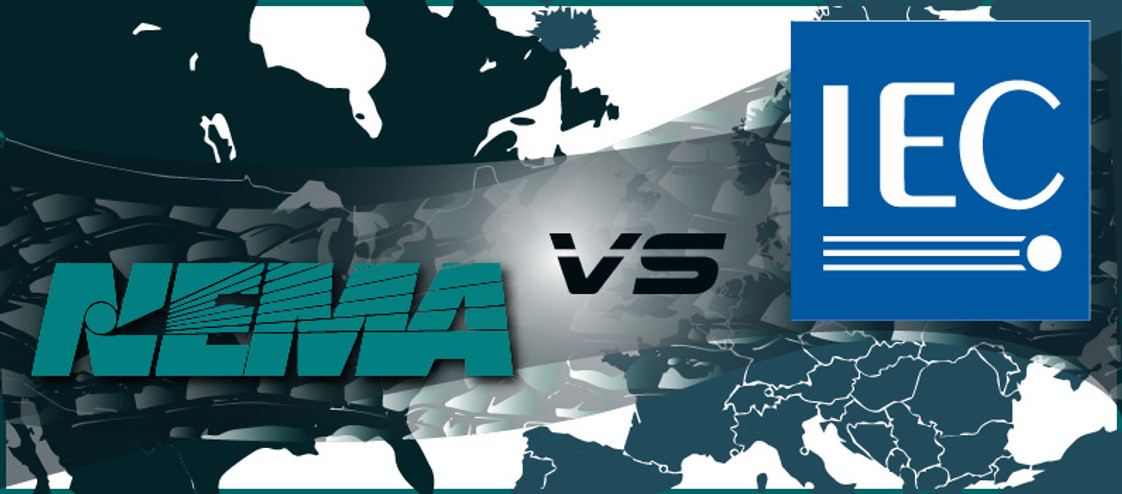
What’s the difference between NEMA and IEC?
Posted by Morgan Spano on Nov 13th 2020
Safety standards within the industrial automation community can be, well… ”complicated” to those not indoctrinated in the ways of electrical engineering.
Previously, we’ve covered IP (Ingress Protection) and NEMA protection ratings, so it’s only natural to go over IEC ratings as well and how they compare.

Fun Fact: In 1930, the IEC developed the following international standard units of measurement, also known as the “Giorgi System,” or “Système international“; “SI” for short:
Hertz (Hz): the unit of frequency
- Ørsted (Ø): the unit of magnetic field strength
- Gauss (G or Gs): the unit of magnetic flux density
- Maxwell (Φ): the unit of magnetic flux
- Gilbert (Gb): the unit of magnetomotive force
- Var (VAr): the unit of reactive power
- Weber (Wb): the practical unit of magnetic flux
We have Lord William Thomson of Kelvin (Kelvin referring to the River Kelvin which flowed near Thomson’s laboratory) to thank for the study and standardization of electrical units, “‘when you can measure what you are speaking about, and express it in numbers, you know something about it.”
If you are wondering why all of this matters when you were just looking for the difference between NEMA ratings and IEC, we’re getting there…I promise!
While Europe was founding IEC, America combined the Electric Power Club and the Associated Manufacturers of Electrical Supplies in to a single entity: the National Electrical Manufacturers Association (NEMA). Similarly, NEMA was founded in order to maintain a standardization of electrical equipment.
Fundamental Differences between NEMA and IEC
- NEMA is primarily used in North America and in small sections around the globe that work heavily with North American businesses and technology.
- IEC standards are developed by a panel of experts from multiple countries. These standards are used as a general benchmark for technical requirements globally.
- NEMA is designed to be easy to select. Generally you only need to know your required horsepower and voltage for your application.
- A higher degree of detail is needed for the selection process. Generally the motor load, duty cycle, and full load current (FLC) when selecting an IEC contactor.
- Product design focuses more on robustness and the ability to use the products in a wide range of applications. Often considered the “general purpose” option of components, NEMA products are commonly serviceable with relative ease.
- IEC products are generally smaller and less expensive but will require more specifications and well defined operating conditions.
- Most NEMA products are sold fully assembled while certain products (starters) allow for certain components to be swapped out (interchangeable thermal units).
- More modular in design. Often products, such as IEC starters come as separate components (contactor, auxiliary block, and overload relay block).
- NEMA devices can more easily withstand short circuits having a built-in reserve capacity.
- IEC starters include single phase detection, and faster reaction to overload conditions.
NEMA does not provide certification directly, however, they do work directly with different organizations that will provide certification testing:
- NIST (National Institute of Standards and Technology) who lists a directory of accredited facilities that will provide testing and conformity assessments.
- ASTM International (formerly the American Society for Testing and Materials) which publishes a “Directory of Testing Laboratories” with over 1000 testing laboratories, some of which perform testing in the electrical products field.
IEC manages four separate conformity assessment organizations:
- IECEE (System for Conformity Testing and Certification of Electrotechnical Equipment and components): Safety and performance of electrical equipment used in the home, office or health care facilities.
- IECEx (System for certification to standards relating to equipment for use in explosive atmospheres): Hazardous areas where flammable gases, liquids, and combustible dusts may be present.
- IECQ (Approval and certification system for electronic components and related materials and processes): Electronic components and related materials and processes.
- IECRE (System for Certification to Standards Relating to Equipment for Use in Renewable Energy Applications): Solar PV, wind and marine energy conversion technology.
So, let’s review! Overall, the main thing to keep in mind when deciding between an IEC or NEMA product is how specialized you want to get with your products and how much you are willing to invest. If you’re simply looking for an easy-to-select, long lasting (if not a little bulky and potentially more expensive) product, then NEMA might be your best bet. If you happen to know exactly what you’re looking for and have specialized needs, you’re likely better off selecting the IEC product. Lastly, we’d be remiss if we didn’t mention region will play a factor. If you happen to be in the North American area; you’ll likely be able to source NEMA products with more ease than their European counterparts.
